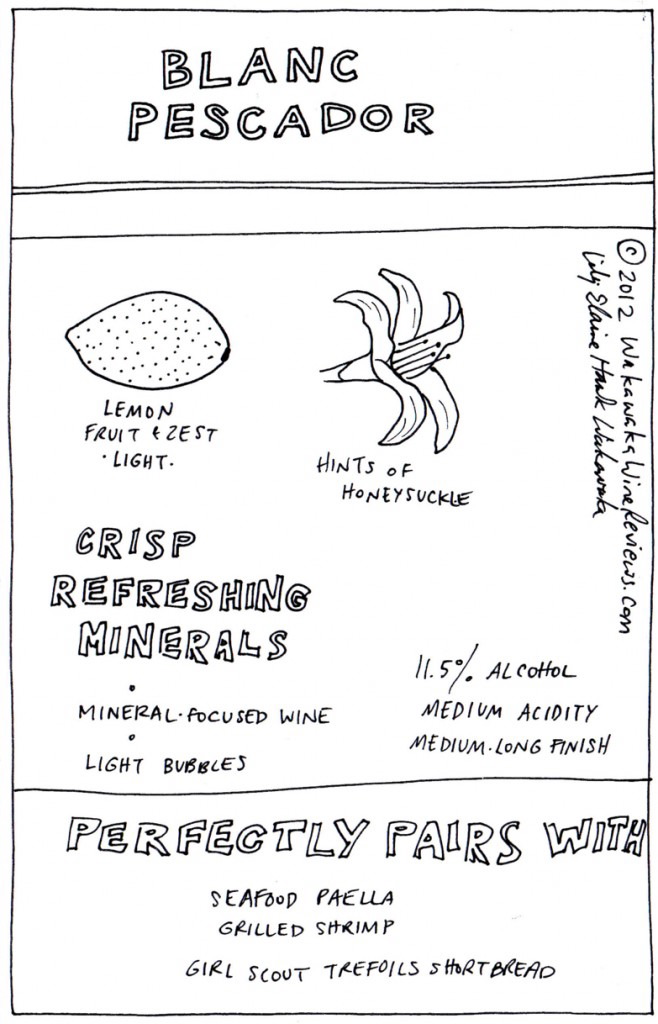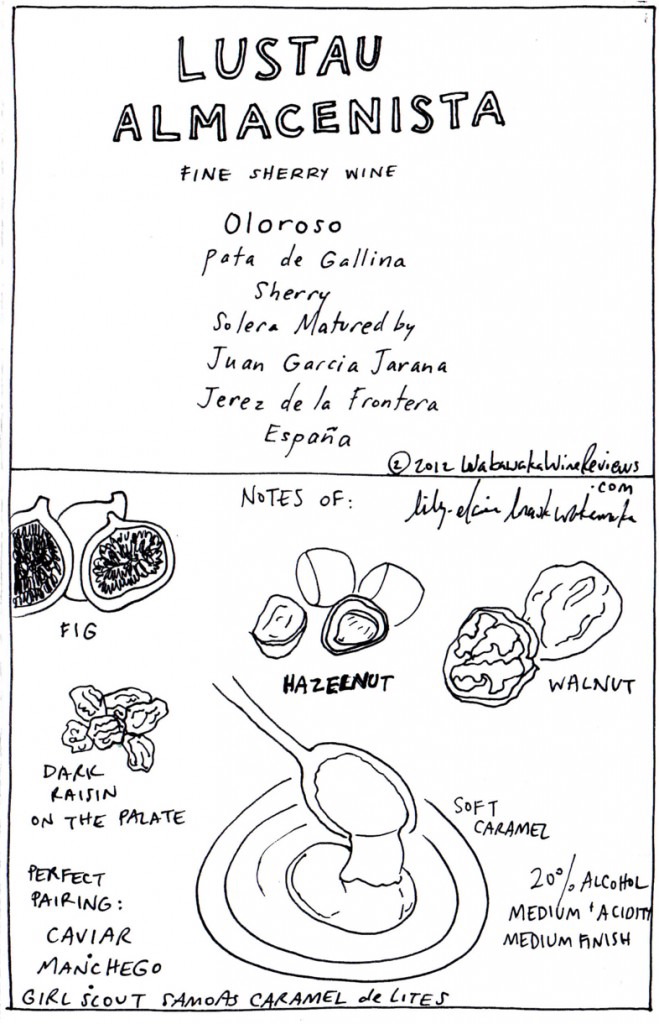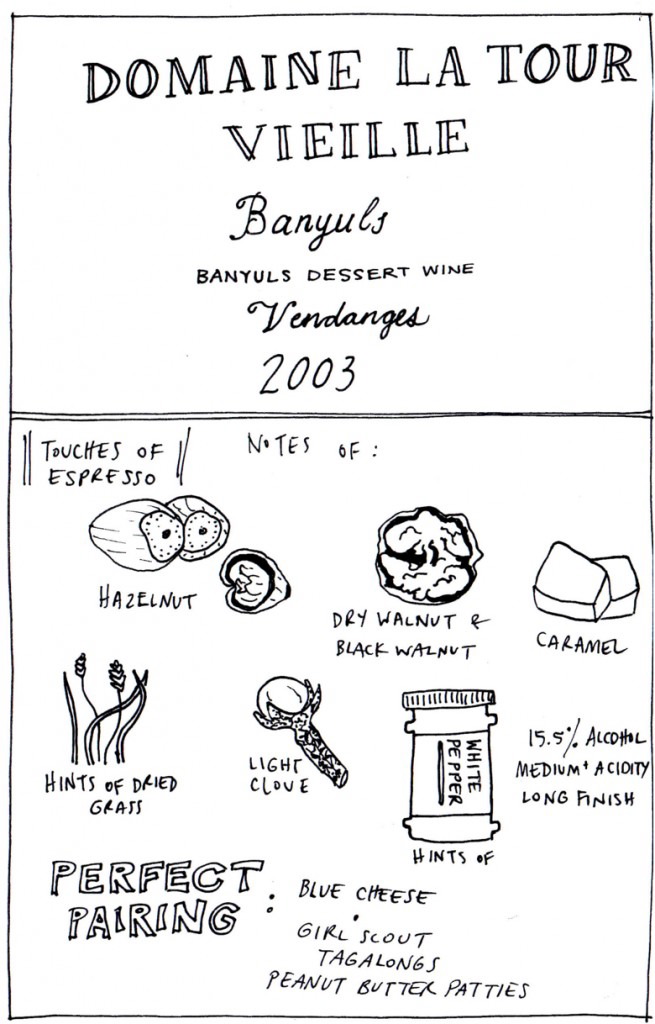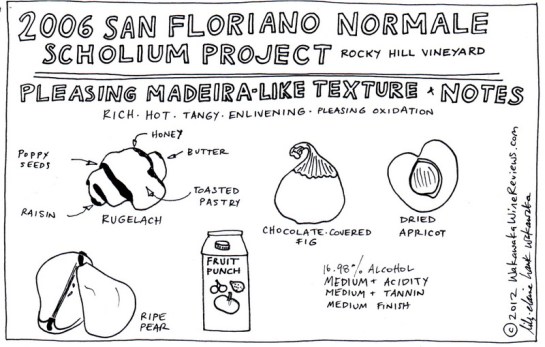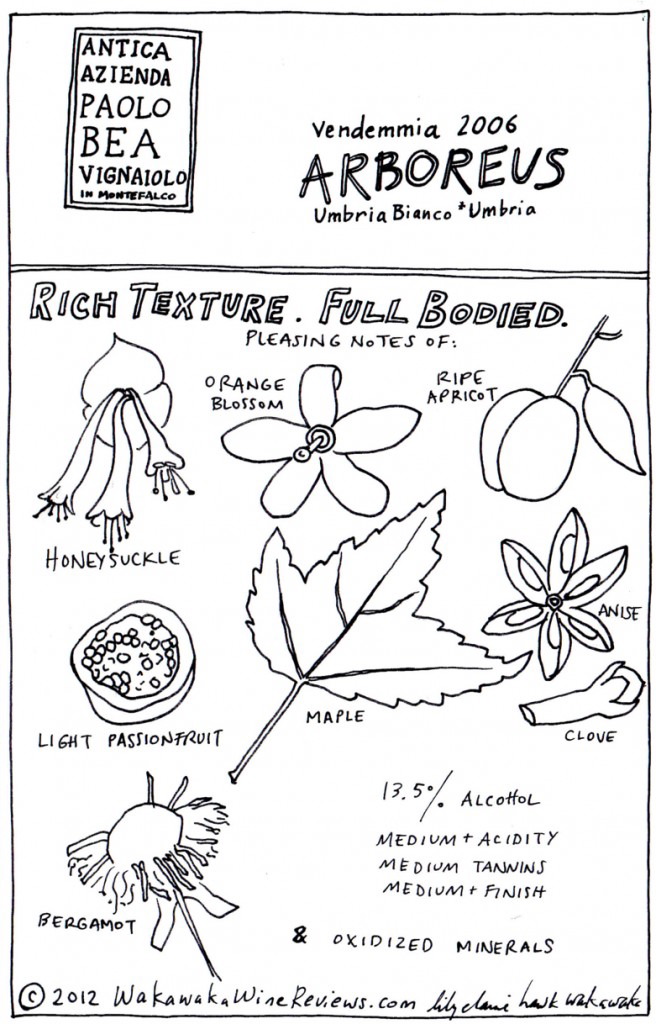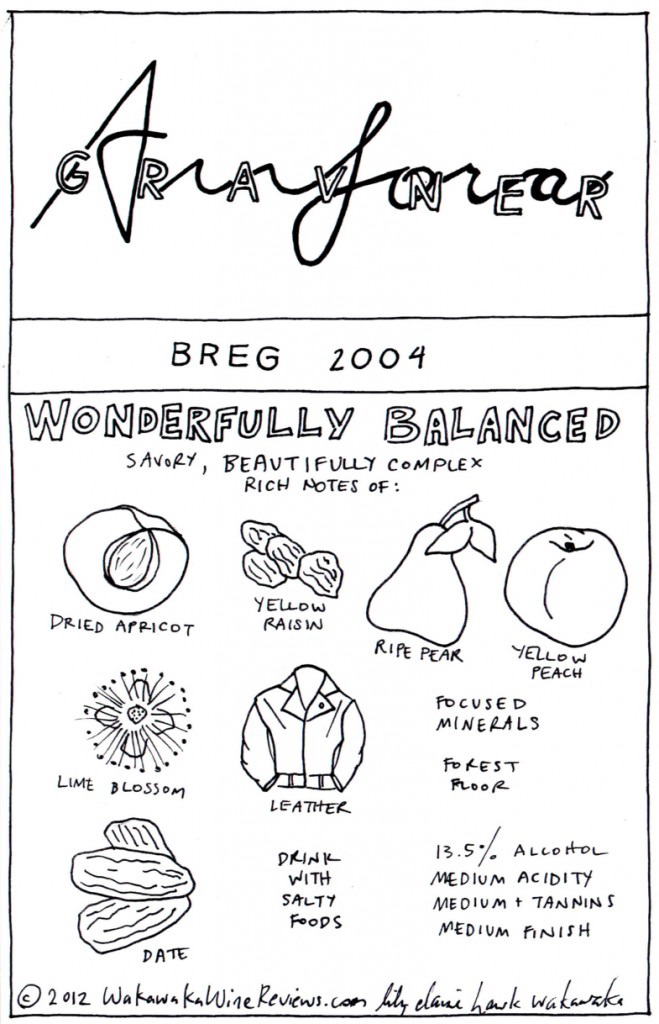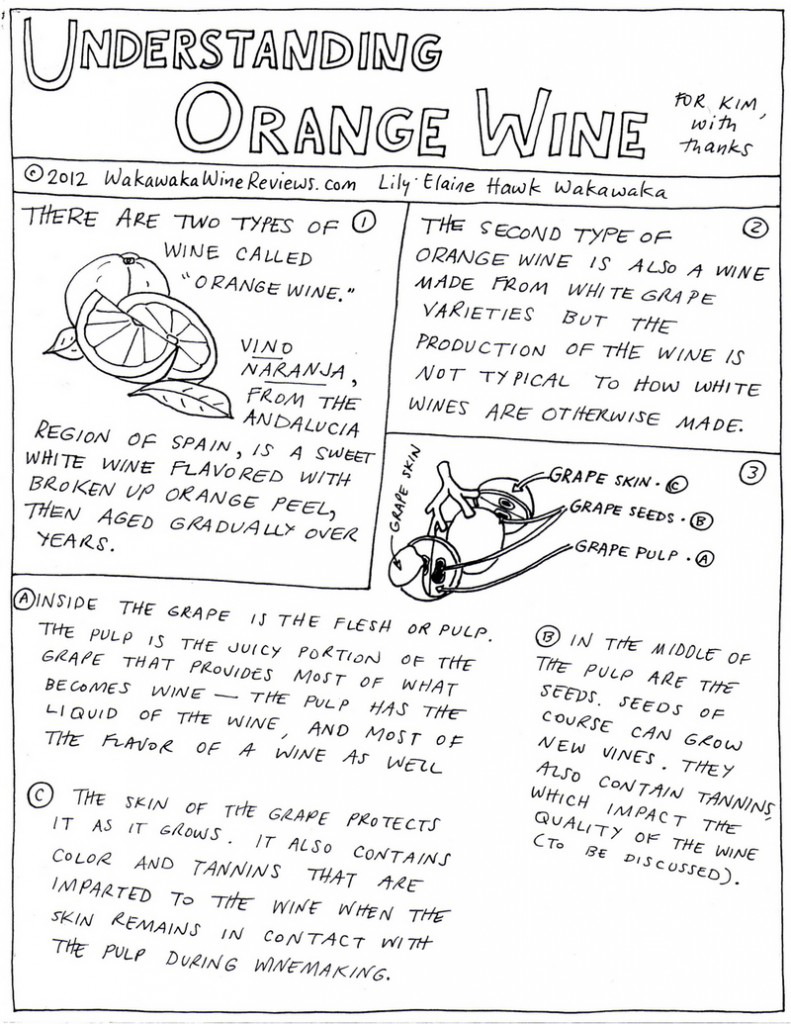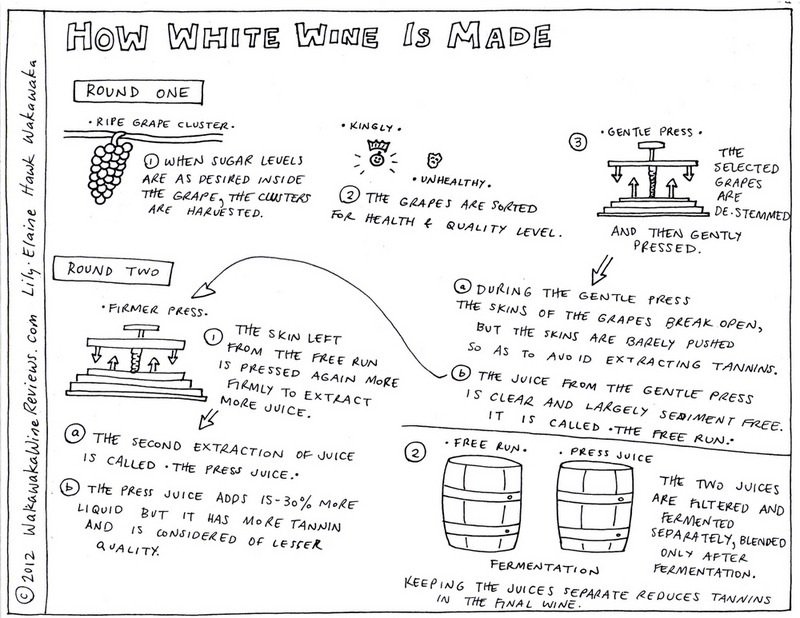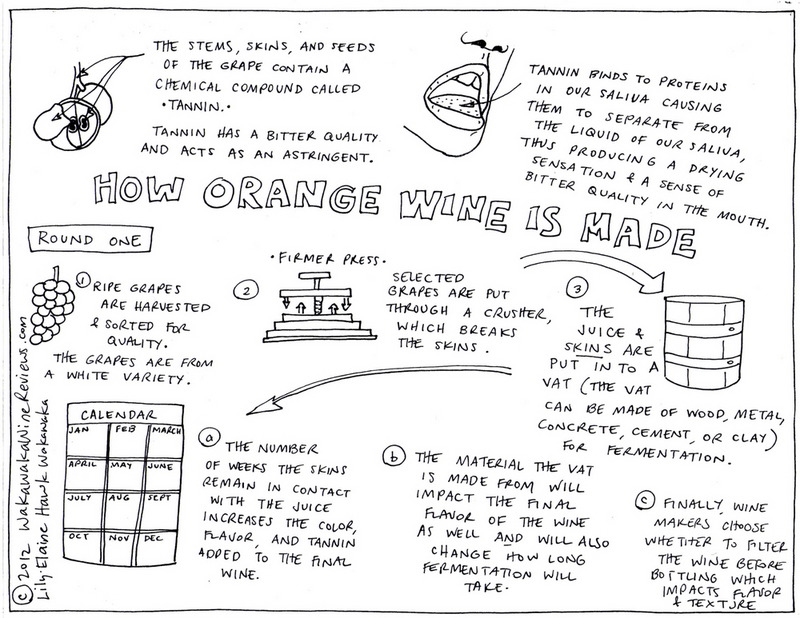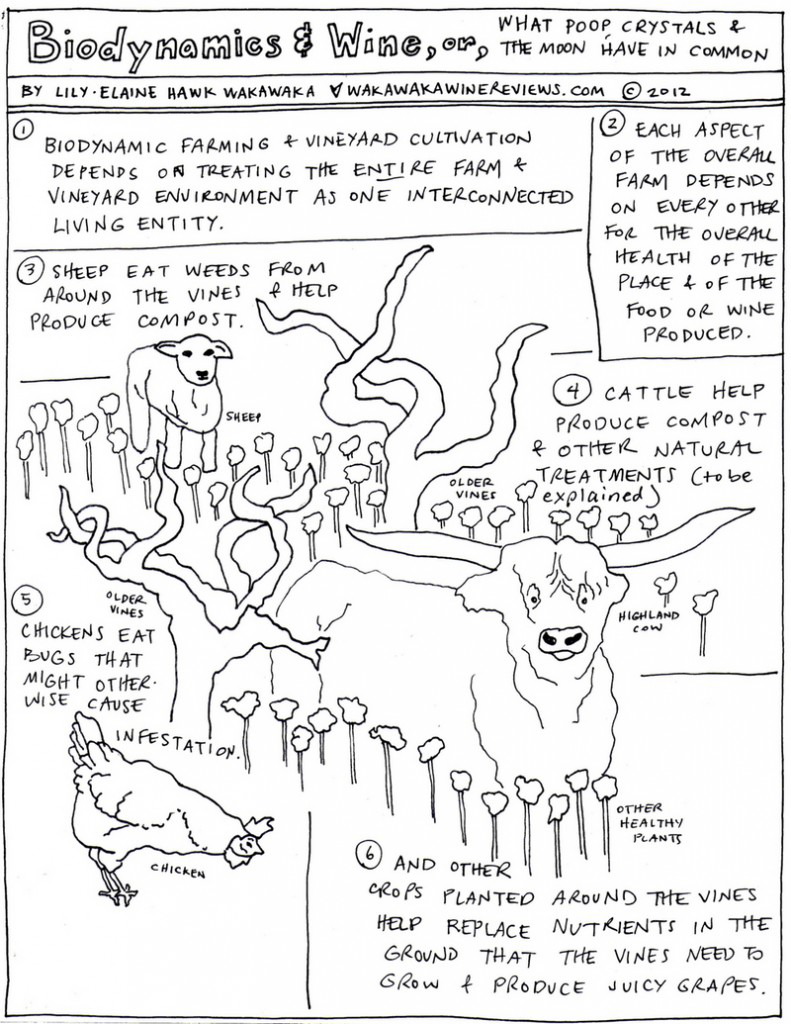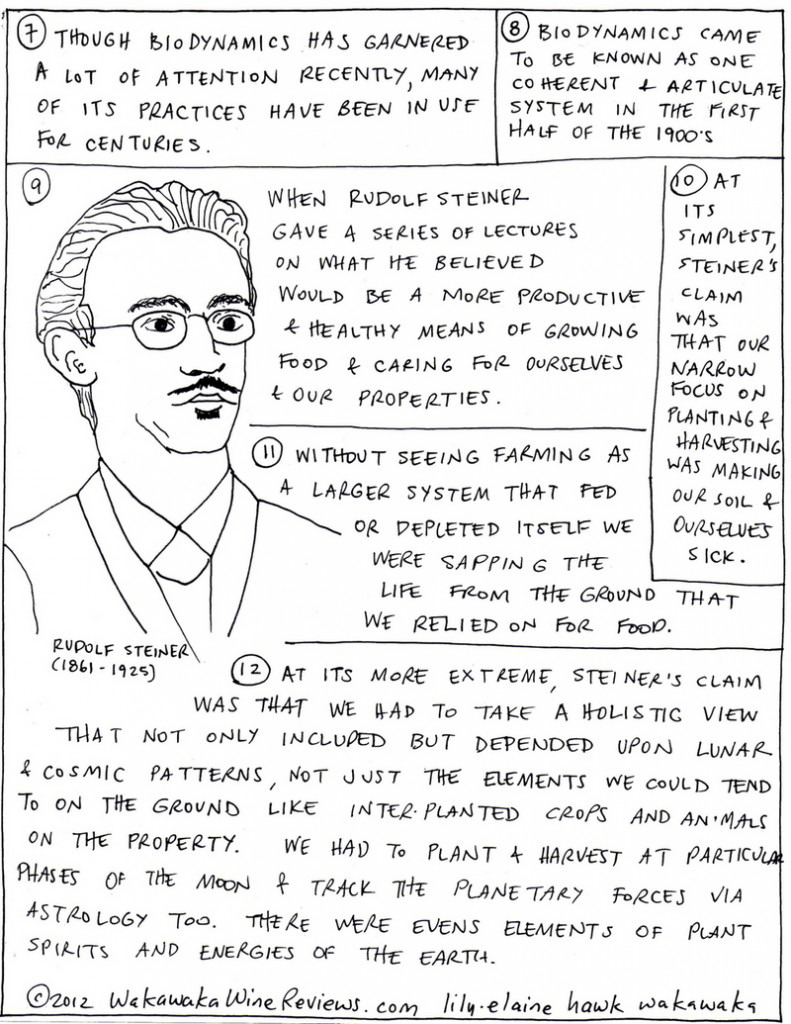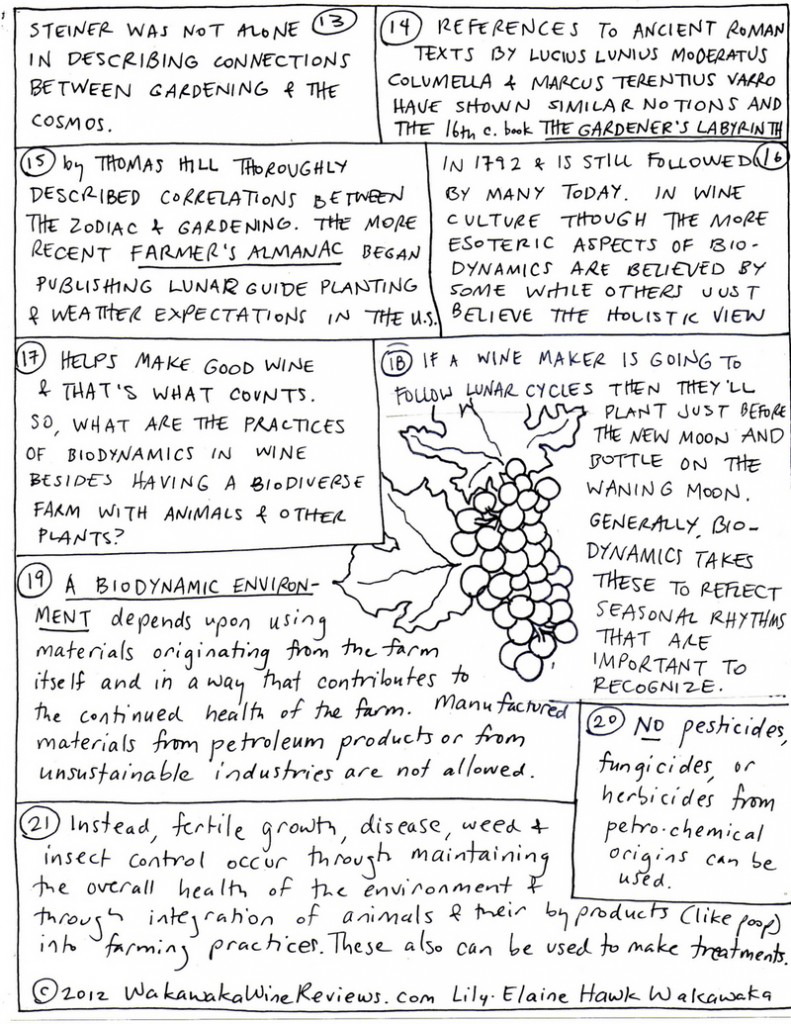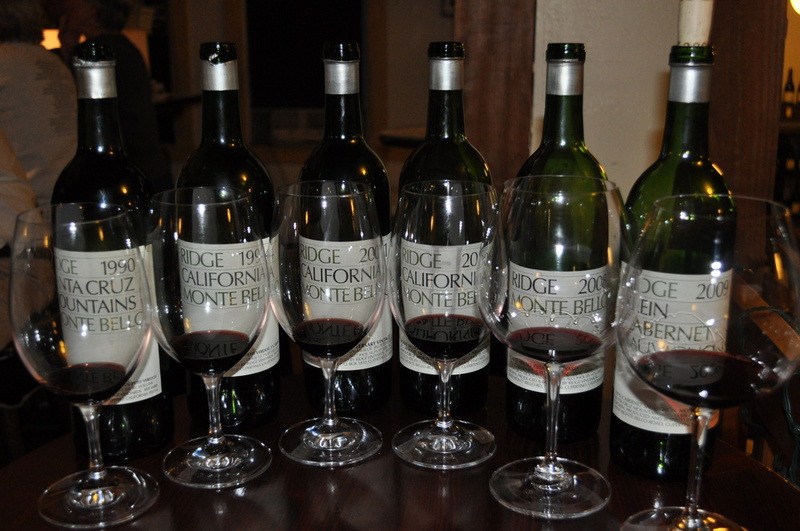Girl Scout Cookies
Girl Scout Cookie season has hit the United States. Did you know there is even a free iphone app to help you locate where the cookies are available for sale?
I got a request to do tasting note comics for Girl Scout Cookies. On my other comics blog I’ve done that from time to time–draw up tasting notes for random foods. What was desired here was a comic representation of the sentimental favorites’ flavors and general qualities so as to be able to keep celebrating the phenomenon even in their off season.
The truth is, I don’t really eat Girl Scout Cookies. It isn’t that I WOULDN’T. It’s just that I don’t. But the idea of drawing tasting notes for them cracked me up, and the idea of drawing cookie notes alongside wine notes down right made me laugh. So, clearly the way to make the request work was to draw up tasting notes for the cookies alongside their perfect wine pairing.
The goal of any wine and food pairing is to bring together the right elements such that both the food and the wine are improved, so that they become something together they simply weren’t before the combination. It can be nice to have wine and food beside each other even when they don’t improve each other so thoroughly, but it’s a magical experience when the perfect pairing is found.
So, when I announced I was going to take the Girl Scout Cookie Wine Challenge, Katherine offered to bring over cookies in each of the flavors available in our area. Before she showed up I ran to the wine shop where I bumped into James, the head chef of Cuvee 928, and he offered input on my wine pairing ideas. Thank you for his suggestion of the Blanc Pescador and the Oloroso Sherry. And then along the way when a couple of surprise cookies I hadn’t anticipated appeared, @DecantChicago gave a push to go ahead and try a bottle of Demi-Sec Champagne I’d already been considering. Wonderfully by the end of the night we really had hit the perfect pairing for each cookie.
Enjoy!
Thank you to Katherine, James, and Cara Patricia–Decant Chicago–for your help!
Tasting notes appear in recommended tasting order as well.
Trefoils and Blanc Pescador
click on comics to enlarge
Girl Scout’s most classic cookie is their Trefoil Shortbread. The cookie is crisp and buttery with very faint sweetness, and the crunch of a proper biscuit. Honestly one can also taste preservative notes along side the buttery flavor so any good wine pairing would hopefully moderate that lightly bitter element.
The Blanc Pescador is a wonderfully crisp, lightly effervescent Cataluyna table white wine perfect for Mediterranean style seafood dishes. I’ve had it along side fish soup with wonderful results. It even did well as the wine base for Risotto.
It’s made from the same grapes as those allowed for Spanish Cava–50-60% Macabeo, 20-25% Parellada, 20-25% Xarel-lo–but instead of making a full sparkling wine, the winemaker chose to make an effervescent (half-sparkling, basically) style instead.
It’s a perfect pairing for Girl Scout Trefoil Shortbread cookies. The wine increases the buttery flavor of the cookies, while also cutting the preservatives bite, and the cookie ups the mineral quality, and lemon flavor of the wine. Yum!
Savannah Smiles and 2005 Dr. Loosen Erdener Pralat Riesling Auslese
click on comics to enlarge
The Savannah Smiles is a lemon flavored shortbread style cookie rolled in powdered sugar and new to the Girl Scouts this year.
This Riesling Auslese is a beautifully balanced sweet wine. It carries a nice mix of rich fruit and light floral qualities alongside pleasing minerals. This style is often thought of as a dessert wine and with its sweeter quality many people drink it only at the end of a meal. But, it’s worth tasting this with a range of other types of food though from spicy thai food, to blue cheese.
The Erdener Pralat vineyards are a mere 4 acres in the Mosel Valley, but are thought to generate some of the finest wines of the region. This is a wine that does well for decades in the bottle. If you have some it’s well worth holding onto but is also drinking nicely now. It’ll simply gain a deepened complexity over time.
Dr. Loosen’s Erdener Pralat Riesling Auslese is also a perfect pairing for Girl Scout’s new-this-year lemon shortbread style cookie rolled in powdered sugar, their Savannah Smiles. When put along side the sharp tang of the lemon cookie the heavier elements of the wine come into even better balance. The wine mellows the cookie tang, while the cookie lightens syrupy elements of the wine.
Do-Si-Dos and Demi-Sec A. Margaine Premier Cru Champagne
click on comics to enlarge
The Do-Si-Dos were an unexpected addition to our tasting evening. I had thought we had five cookies to review, and didn’t know in advance of this one. The Do-Si-Do is a slightly salty, crisp oatmeal cookie with a thin layer of creamy peanut butter inside. With the combination the cookie carries toasted oatmeal, the creaminess of the peanut butter with a slightly salty, faintly sweet palate.
To balance the dryness and saltiness of the cookie it would need something soft in the mouth and slightly sweet. Not as heavy as the Auslese, nor as thick as the upcoming Banyuls.
We turned to the Demi-Sec A. Margaine Premier Cru Champagne, and the combination was perfect. The demi-sec style offers a softer body for the champagne while also giving just a touch of sweetness. The balance of herbal notes with a light brie funk on the nose and touches of yeast and toast bread beside minerals give a range of flavors avoiding the cloying problem. This is an elegant, delicate, and balanced champagne.
The Margaine is a special champagne in that Arnuad Margaine fully produces this champagne himself. Grower’s champagne is a less common version of the wonderful drink, and one that offers a difference in quality from the more mass produced types that dominate the wine type. A grower’s champagne is simply one in which the person that makes the champagne has also grown his own grapes. Margaine does just that making less than 5000 cases a year.
The wonderful thing about this wine really is found in how widely it could be paired. I’d love to drink it with dim-sum, as suggested by Michael Skurnik, or with spicy thai food. Oh… yum.
Alongside the Do-Si-Dos the yeast of the champagne is highlighted in a pleasing way, while the wine makes the peanut butter of the cookie both smoother and creamier tasting. The wine also eases the crunch of the cookie just slightly in a way that makes it work better.
Samoas and Lustau Almacenista Oloroso Sherry
click on comics to enlarge
The Samoas cookie from the Girl Scout combines a crisp cookie center covered in caramel, toasted coconut and touched with chocolate. So it offers a combination of chew with crunch, and some sweetness.There are also lightly buttery elements to be tasted here.
To pair, a dry, full flavored companion is found in Oloroso Sherry, a dry style sherry showing lots of nut, hints of caramel, and touches of rich fruit. The high alcohol content work against the sweetness of the coconut making it more balanced, while the cookie brings out more fruit notes in the sherry uncovering flavors of dried cherry and more raisin. So, while the cookie became less sweet, the wine turned more complex. A pleasing complement.
The truth is a lot of people I know don’t like coconut, and so this cookie comes as the least favorite for them. I don’t mind the fruit-seed but also am not much into sweet cookies. It was a nice moment to see how this wine and the cookie worked together. As Katherine, one who does not like coconut, put it, “the cookie became worth eating” without hiding the coconut altogether.
At this point in the evening the wine and cookie match up was going so well Katherine extended me the following compliment. Thank you! “I salute your ability to pair Girl Scout Cookies with wine. It’s an important life skill.” Katherine, there is no one better to work on such a project with.
Tagalong Peanut Butter Pattie with 2003 Domaine La Tour Vieille Banyuls
click on comics to enlarge
The Tagalong is a cookie topped in creamy peanut butter and covered in chocolate. The flavors here are rich, full, and very buttery and creamy.
The Banyuls is a full bodied, full flavored dessert wine that showcases nut, caramel, dried herbal, and spice notes. The acidity here is medium high helping to balance the sweetness of the wine and the alcohol level at 15.5% gives just enough heat to counter the richness.
When paired with the peanut butter pattie the cookie becomes more creamy and buttery, while the wine becomes less sweet, and a hint cooler. The buttery-ness of the peanut butter works well here against the alcohol heat. The salt of the peanut butter too fights the sweetness of the wine so as to lessen such effects when drinking it, making both the cookie and the wine smoother.
The classic pairing for Banyuls is chocolate, and with this cookie I agree while adding a couple more demands alongside.
Thin Mints and Rihaku Nigori Sake Dreamy Clouds
click on comics to enlarge
The big challenge of the night came in trying to pair Thin Mints. Mint and chocolate are a hard set to make work with a wine. The classic pairing for Thin Mints is, after all, coffee. But I was determined that a wine could be found, and realized that the fumy quality of sake, rice wine, resembles slightly the fumy nature of mint flavor, while the very slight sweetness of Nigori style sake would likely work with the sweetness of a cookie. All my friends were skeptical.
Thin Mints are as they sound, a thin cookie with a thin layer of mint dipped in chocolate. They do well being frozen and then eaten after an overnight in the cold state.
Nigori Sake is left slightly cloudy in comparison to other types of sake, which are, by contrast, filtered. Nigori holds some rice sediment still, which keeps a slight haze in the cup, and works to help generate what is thought of as the sweetest of sakes, though still only slightly sweet. Due to the rice and yeast used, the Rihaku sake is also quite fragrant with dried plum, hints of banana, and a rice tang.This style is also meant to be finished once the bottle is open as oxidation will quickly change the flavors. Rihaku Dreamy Clouds is a super clean, pleasant sake.
I’ll admit the sake and cookie were a surprising flavor combination. I hadn’t had Nigori sake in a while and after a steady stream of grape wine tastings up till this point it was a significant contrast. Still, once the sake and cookie were tasted together the combination worked. The sake made the mint even more palatable, also cutting the waxiness of the chocolate, while the cookie erased the banana elements of the sake.
***
Thanks again to Katherine, James, and Cara for your enthusiasm and suggestions! Thanks too to Katherine for providing the cookies. 🙂
***
Have a wine focus you’d like to see explored here through comics and write up? Please feel free to email me at lilyelainehawkwakawaka (at) gmail (dot) com . I enjoy the challenge, and hearing from you too!
Copyright 2012 all rights reserved. When sharing or forwarding, please attribute to WakawakaWineReviews.com

